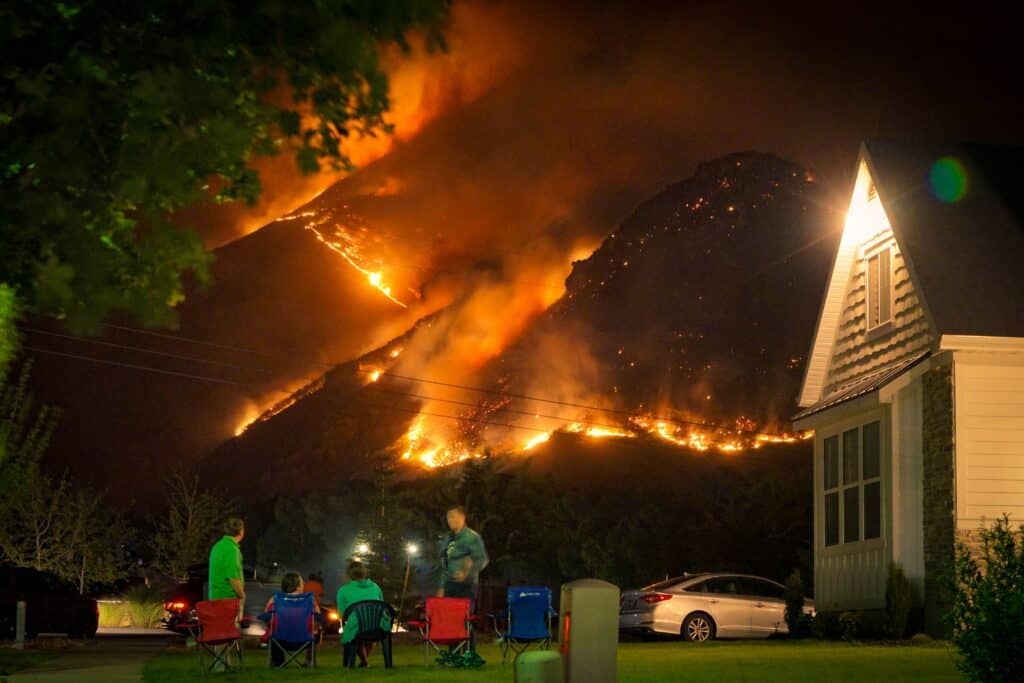In early May 2022, the federal banking regulators proposed a rule that will overhaul the implementing regulations for the Community Reinvestment Act (CRA). The proposed rules add “disaster preparedness and climate resiliency” activities as a new category of community development, eligible for CRA credit. It is imperative that this change be retained in the final rule.
Climate change disproportionately affects low- and moderate-income (LMI) communities, which tend to be more susceptible to natural hazards, such as flooding and heat waves. The agencies are correct to factor that reality into their broader effort to bring CRA into the 21st century.
Congress enacted CRA in 1977 in an effort to end redlining and other forms of racial discrimination in lending. CRA has certainly had a positive impact. Since 1996, according to an NCRC analysis of bank lending data, CRA-covered banks issued almost 29 million small business loans in LMI tracts, totaling $1.156 trillion, and issued another $1.179 trillion in community development loans that support affordable housing and economic development projects benefiting LMI communities. However, there is much work to be done.
Redlining has had lasting and devastating impacts on low-income communities and people of color. A recent report on the legacy of redlining from The Digital Scholarship Lab and NCRC demonstrates how racial residential segregation, resulting in large part from historic redlining practices, may have a direct impact on health through poor housing conditions, disparities in educational and employment opportunities, inadequate transportation infrastructure, access to healthcare and economic instability. In addition to the ongoing impact of redlining, the racial wealth divide is not improving, and inequality is, by many measures, increasing.
Climate change compounds these problems, threatening to further widen the racial wealth divide and exacerbate the ongoing harms created by redlining.
The Disparate Impact of Climate Change
A growing body of research shows that climate change disproportionately impacts the most vulnerable communities. Health burdens from urban heat are worst in historically redlined communities, which lack green space and tree cover common in wealthier, less diverse communities. A recent literature review of climate research from the Federal Reserve Bank of New York (FRBNY), Understanding the Linkages between Climate Change and Inequality in the United States, found growing evidence that physical risks and transition risks from climate change exacerbate inequality by income, race and geography. For example, affordable housing in the Southeast – both subsidized and market driven – is most at risk of future flooding and rising sea levels. Although there are increasingly effective “technological innovations and adaptations that may improve resilience to heat and disease,” the FRBNY authors wrote, “it is the higher-income communities and populations that are more likely to benefit.”
CRA Must Prevent Climate Redlining
The FDIC, OCC, Financial Stability Oversight Council, along with numerous international banking regulatory bodies, have taken a positive step forward by identifying climate change as a risk that banks must address in order to ensure financial stability.
However, because climate change disproportionately impacts low-income communities and people of color, climate risk management without a corresponding focus on low-income communities and communities of color threatens to widen inequality and the racial wealth divide. Regulators must build in incentives to engage in disaster preparedness and climate resilience activities that directly benefit LMI communities. The ongoing CRA rulemaking is the perfect opportunity to do so.
The CRA Notice of Proposed Rulemaking includes a new definition of “disaster preparedness and climate resiliency” and lists eligible investments that would provide meaningful support to communities. In conjunction with this new definition within the CRA context, climate risk management guidance must clearly indicate that a new form of redlining – avoidance of LMI neighborhoods or communities of color because of climate risk – will not be tolerated. Instead, the agencies should clearly communicate to banks that climate remediation activities in LMI neighborhoods reduce risk and contribute to ecologically and environmentally thriving communities.
The agencies should also acknowledge the ongoing environmental harm resulting from certain industries. Banks should receive lower scores and/or CRA rating downgrades for financing industries that contribute to climate change, such as coal, tar sands and oil and gas exploration and production, particularly if they are financing fossil fuel facilities in LMI neighborhoods and communities of color while not financing renewable or clean energy.
Conclusions
Together, CRA reform and climate risk management guidance can create the incentives needed to prevent climate redlining, and to drive innovation that can simultaneously mitigate climate risk and narrow the racial wealth divide while addressing the impacts of redlining on low-income communities and communities of color. There is no shortage of engineers, scientists, CDFIs and community-based organizations who are ready to partner with banks to rise to the challenge that climate change presents, in particular to low-income communities. What remains to be seen is whether we rise to the occasion, or repeat our past mistakes.
Catherine Petrusz is a CRA Coordinator at NCRC.
Photo by Mike Newbry on Unsplash



